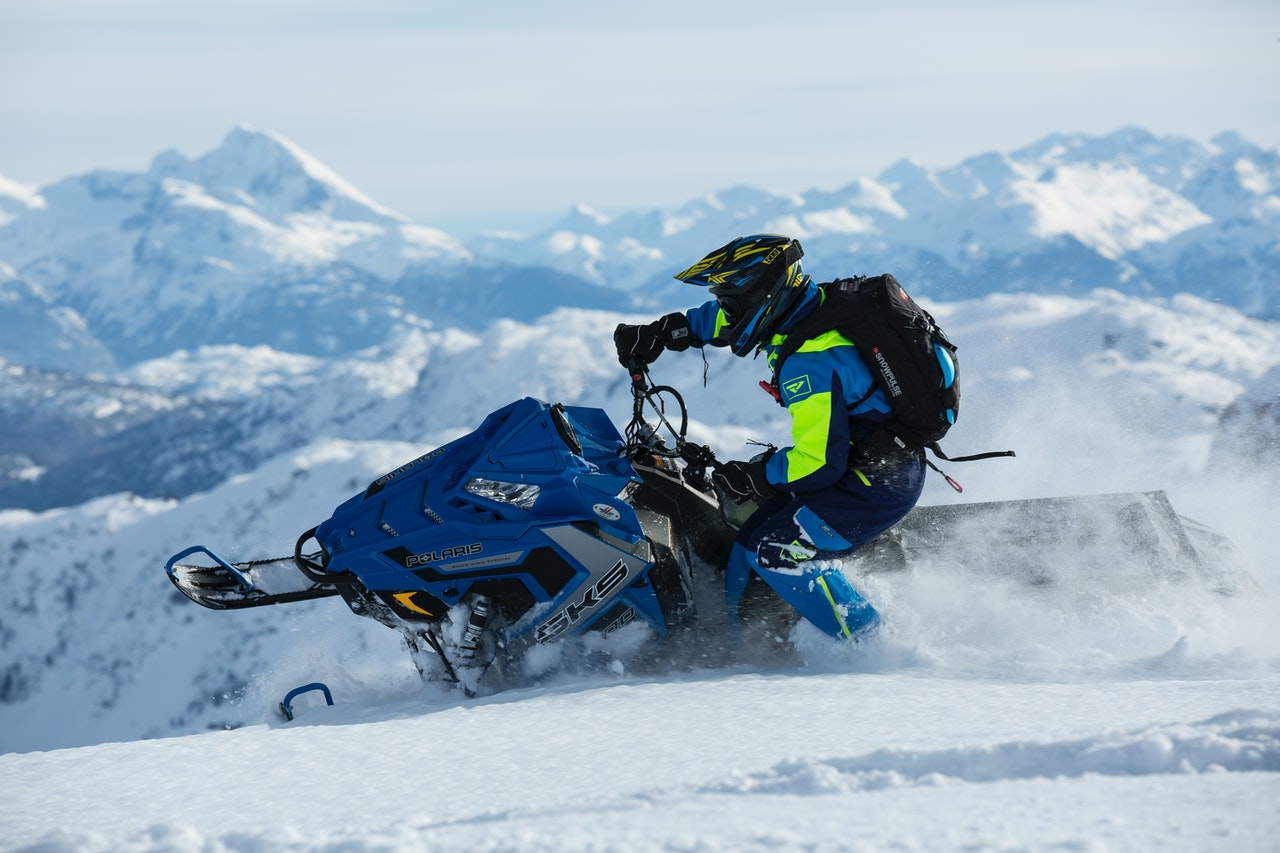The notion of a motorized vehicle that can run on deep snow has been around almost as long as the internal combustion engine. The first patent for a workable sled, the “Vehicle Propeller” was granted in Canada in 1911. In 1916, a United States patent was issued for a “traineau automobile”, believed to be the first design to use the rear track and front ski combination still in use today. By the 1920s, so many Ford Model T owners were modifying their cars to run on snow that the contraptions became known as “Snowflyers”.
Today, the Canadian Council of Snowmobiling Organizations estimates that each year 1.5 million snowmobilers enjoy “sledding” on some 600,000 registered machines. In the process, they contribute more than $8 billion to the country’s economy. With many areas in Southeast and Northern British Columbia receiving on average over 100 cm of snowfall annually and many kilometres of groomed trails, the province is a prime destination for snowmobilers.
Riding a 250 kg vehicle capable of speeds of up to 100 km/h carries with it a degree of danger not found in other winter sports and, sadly each winter sees several dozen fatalities among Canadian sledders. The independent Canadian Institute for Health Information (CIHI), estimates that more than a thousand more sledders are hospitalized each year with snowmobile-related injuries. As with so many winter activities, a little bit of preparation and common sense can go a long way toward making your back country “snow machine” adventure a safe and enjoyable one. Here are a few things to keep in mind.
Don’t Sled Alone. Whether it’s a mechanical breakdown or a fall into a hidden ravine, having a buddy nearby can literally mean the difference between life and death. Consider taking a guided tour if you’re unfamiliar with the area. You’ll be contributing to your own well-being and enjoyment as well as the local economy.
Know Your Skill Level. It’s tempting to want to strike off across an open meadow through several metres of fresh powder, but this kind of sledding is best left to experienced sledders. Those newer to the sport, as well as younger sledders, should stick to the maintained trails whenever possible. It greatly reduces the risk of hitting a snow covered rock or fallen tree.
Take a Safety Course. For novice riders or those in need of a refresher, the B.C. Snowmobile Federation offers an online safety training course. It’s free to sign up, though you must pay $44.50 CAD and pass an exam in order to receive a certificate.
Wear Proper Protective Gear. While it’s generally not required by law, this includes a helmet. Many snowmobile accidents result in facial injuries from contacting obstacles or handlebars, so for maximum protection choose an approved model with a full face guard. You’ll spend a bit more, but you’ll make up for it in savings on dental reconstruction you won’t need.
Share the Backwoods. Remember that snowmobilers are often not the only folks in the woods. Aside from others enjoying snowshoeing and cross-country skiing, there may also be logging or other commercial activities. If you do encounter other trekkers, stop and take a few minutes to compare routes and alert them to any known safety concerns, such as avalanche-prone areas.
Keep An Eye Out. Your eyes provide virtually all of the information you need to remain safe when snowmobiling. Blowing and falling snow or freezing rain, sun glare and fogging or icing of visors and goggles are just a few of the things that can impair your vision. Remember too that depth perception is more difficult when all around you is white.
Avalanche Awareness. Due in part to improvements in cold weather clothing and equipment and the deeper trips into high country they allow, avalanche deaths worldwide continue to rise each year. Checking the latest condition reports and complete an avalanche awareness course are two of the most basic precautions sledders can take. More information is available at Avalanche Canada’s website.
British Columbia Accident Lawyers
If you have been injured by the negligence of a snowmobile operator, the experienced personal injury team at Diamond and Diamond are ready to help. Call our 24/7 injury hotline at 1-800-567-HURT or visit our website to speak to someone now. We offer free consultations and case evaluations. Our team of personal injury lawyers represents clients throughout British Columbia.
